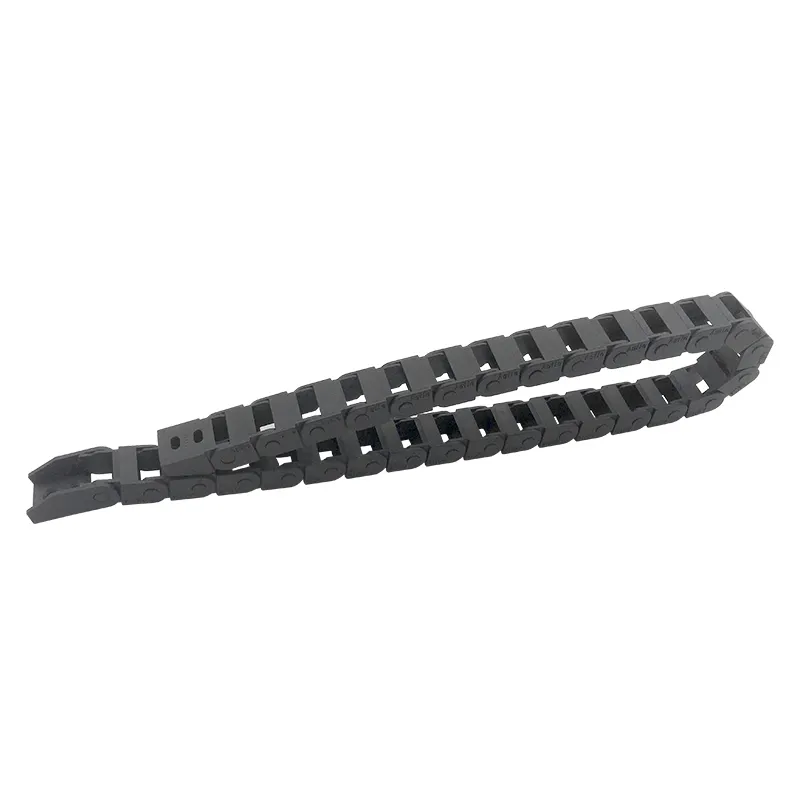bridge drag chain
The Importance of Bridge Drag Chains in Industrial Applications
In the realm of industrial automation and engineering, efficiency and safety are paramount. One critical component that often goes unnoticed but plays a vital role in these fields is the bridge drag chain. This innovative device is designed to manage and protect cables and hoses in machinery, ensuring smooth operation and minimizing wear and tear. In this article, we will explore the purpose, design, and applications of bridge drag chains, alongside their significance in modern industry.
What Are Bridge Drag Chains?
Bridge drag chains, also known as energy chains or cable carriers, are specialized structures utilized to support moving cables and hoses in various industrial settings. These chains are designed to slide on a bridge or rail system, allowing for effortless movement of electrical, hydraulic, and pneumatic connections as equipment operates. By keeping cables organized and secured, bridge drag chains prevent tangling, reduce friction, and help maintain the integrity of the cables over time.
Design Features
The design of bridge drag chains is crucial for their performance and durability. Typically made from high-quality plastics or metals, these chains are engineered to withstand harsh environmental conditions, including extreme temperatures, chemicals, and mechanical abrasion.
1. Modular Construction Many bridge drag chains consist of modular links, allowing for easy customization in length and configuration. This feature enables engineers to tailor the system to specific applications without excessive modifications.
2. Versatile Mounting Options Bridge drag chains can be mounted in various configurations, including vertical, horizontal, or angled installations, providing flexibility in design and space utilization.
3. Internal Separation To enhance organization and safety, many drag chains come equipped with internal separators. These dividers keep different types of cables or hoses apart, preventing interference and potential damage.
4. Noise Reduction Some drag chains are designed with noise-absorbing features. These designs help reduce operational noise, improving workplace conditions and minimizing disturbances.
bridge drag chain

Applications
Bridge drag chains are employed across a wide range of industries, including manufacturing, robotics, construction, and aerospace. Here are some specific applications where they play a crucial role
1. Robotics In automated machinery, bridge drag chains manage the extensive wiring and tubing required for robotic arms, ensuring fluid movement and reducing the risk of entanglement.
2. CNC Machines Computer Numerical Control (CNC) machines rely on precision and reliability. Bridge drag chains protect and guide the cables, which are essential for maintaining the machinery's accuracy and preventing downtime due to cable failures.
3. Automotive Assembly Lines The automotive industry utilizes bridge drag chains in assembly lines to facilitate the movement of wiring harnesses. This application ensures that the cables do not obstruct operations or pose safety hazards.
4. Crane Systems In overhead crane systems, bridge drag chains allow for the efficient movement of power cables and control hoses, crucial for the cranes' operation in warehouse and construction environments.
5. Material Handling Equipment In logistics and material handling systems, bridge drag chains play a vital role in managing the cables that power conveyor belts and automated guided vehicles (AGVs).
Conclusion
Bridge drag chains are essential components in modern industrial applications, meticulously designed to protect and organize cables and hoses in a multitude of settings. Their robust construction, flexible configurations, and effective management of moving parts contribute significantly to the efficiency and safety of industrial operations. By minimizing wear and tear on cables and reducing the risk of entanglement, they ensure that machinery runs smoothly, thereby enhancing productivity and decreasing downtime. As industries continue to evolve and advance, the importance of bridge drag chains will undoubtedly remain pivotal in promoting efficient and safe operations in various engineering and automated processes.








